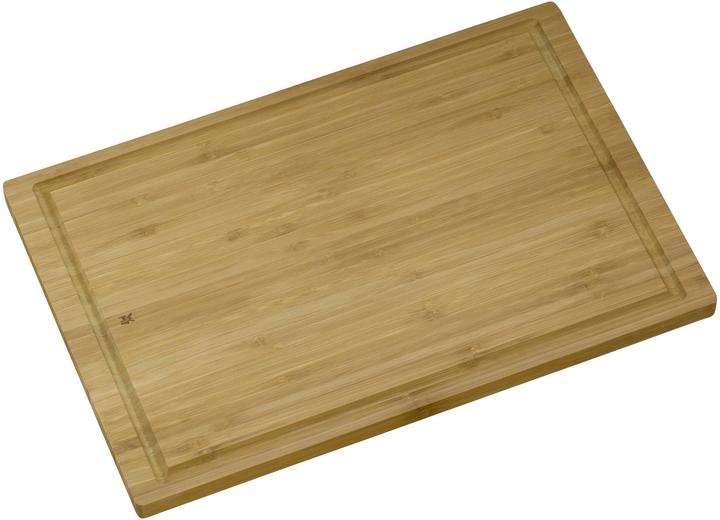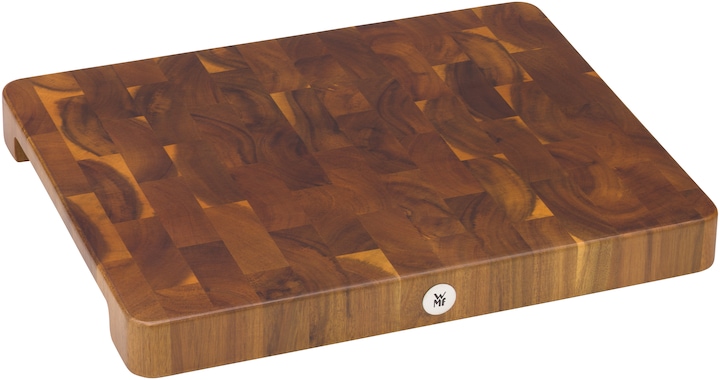

Chopping boards: wood or plastic, that is the question here
Which food is best cut on which board? And what to do if neither plastic nor wood is convincing. Are there alternatives?
I hate to admit it: When I'm cooking, I usually pick up one of my plastic chopping boards at random. Lately, I can't get two questions out of my head, especially because the boards look pretty worn out: «Are they still hygienic at all?» And: «Doesn't the constant cutting get lots of microplastic particles into my food?»
Of course, I also have a few wooden boards. But I only use them to cut bread. So which is better: wooden or plastic chopping boards?
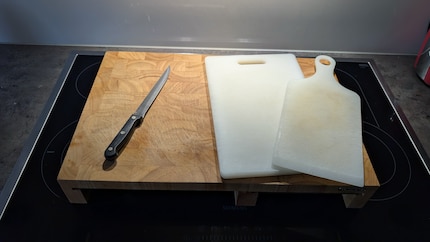
Source: Patrick Vogt
When the apple slices suddenly taste like garlic or onions
Before I address the question of the best material, I think one thing is fundamental: it makes sense to cut different foods on different boards. That's why I have several chopping boards in my kitchen, for meat, fish, vegetables and bread.
This prevents bacteria from transferring from one food to another. This is particularly important with raw meat: salmonella from poultry can otherwise get onto salad or fruit.
But it's not just pathogens that speak in favour of separate shelves. You don't want your apple slices to suddenly taste like onions or garlic,
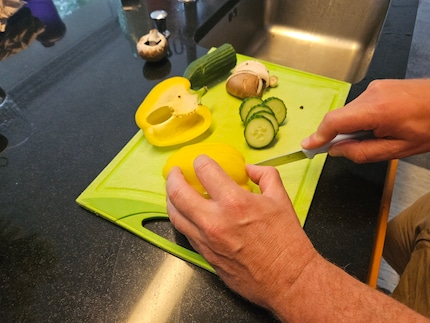
Wood has antibacterial properties
Back to the initial question: Are wooden or plastic boards the better choice? With both, frequent cutting creates grooves in which bacteria can settle.
Many people probably prefer plastic because these boards can be cleaned at higher temperatures in the dishwasher. This reliably kills germs. But that alone is not enough to make a decision. Although wooden boards are somewhat more difficult to clean, certain types of wood such as bamboo, maple, beech, oak or olive have antibacterial properties. These inhibit the growth of bacteria or even kill them off.
In 1994, the Food Safety Laboratory at the University of Wisconsin discovered that wood can kill bacteria. This is due to natural ingredients such as polyphenols and the wood's ability to absorb moisture. Bacteria cannot survive without water. A study by the Technical University of Munich also came to the conclusion that the microbial load on wooden chopping boards is often only half that of plastic.
Another advantage: wood swells slightly when exposed to moisture. This allows grooves to close again over time. What's more, wood is made from a renewable raw material and does not generate any plastic waste at the end of its life cycle.
In favour of plastic: they can be cleaned in the dishwasher at high temperatures
There are many arguments in favour of wooden chopping boards. Nevertheless, the decision is not so clear-cut. The Federal Institute for Risk Assessment considers plastic boards to be more hygienic, as they can be cleaned in the dishwasher at high temperatures.
I therefore prefer to use plastic, especially for poultry. I also find plastic more practical for strong-smelling foods such as onions or garlic or for colouring ingredients such as beetroot. These trays can be cleaned thoroughly without any odours or discolouration remaining.
And what about microplastics - how much and how dangerous?
Even though plastic boards are easier to clean, I find myself wondering more and more often whether microplastics are getting into my food - and therefore into my body - when I cut it.
A study from 2023, published in the journal Environmental Science & Technology, came to a clear conclusion: between 1536 and 7680 tiny plastic particles are produced when using a plastic board, which can end up on the knife and therefore in the food.
The German testing company TÜV SÜD distinguishes between primary microplastics, which are deliberately produced, for example for cosmetics, and secondary microplastics, which are produced by abrasion of larger plastic parts - for example when cutting.
TÜV-SÜD media spokesperson Dirk Moser-Delarami explained on request: «Secondary microplastics are particularly relevant for chopping boards, as the smallest plastic particles can be mechanically removed during cutting and potentially transferred to food or rinsing water.» However, this effect has not yet been standardised or regulated, as there are no binding limit values or standardised test methods. «In this respect, it is not yet a topic for TÜV SÜD.»
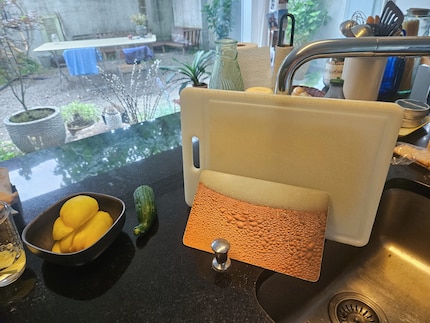
«Ingestion of microplastics is anything but harmless»
The German consumer protection portal « Öko-Test» has also asked itself how many microplastic particles are released when cutting. It refers to the Federal Institute for Risk Assessment (BfR). «Studies show that microparticles are produced when cutting on plastic boards.» And these particles could also end up in food.
But, according to the BfR: «Most of the microplastics ingested with food are not absorbed in the intestine but excreted unchanged.» Only very small particles, smaller than 0.15 millimetres, can pass through the intestinal barrier. Further distribution in the body via the blood is only likely for particles smaller than 0.0015 millimetres. «There is currently no evidence of harmful effects of microplastic particles on human health», emphasises the Federal Institute.
« Öko-Test» is more cautious. Microplastics are found in many everyday products, but research is still in its infancy. There are indications that long-term ingestion is not harmless.
What would be possible alternatives?
If I decide against plastic because of the microplastics, but don't really warm to wood either, the question arises: are there any alternatives?
In fact, there are chopping boards made from materials such as stone, glass, marble or titanium. They look high quality, but are hard on knife blades. These dull more quickly when cutting.
There are also sustainable solutions: Some boards are made from pressed paper. They are more robust than you might think and are also environmentally friendly.
Cutting boards made from rubber are also becoming increasingly popular. Manufacturers promise that they are durable and hard-wearing. Unlike wood, they do not absorb odours or colours and are described as being suitable for everyday use.
I haven't yet decided which board to put in my kitchen. But when I look at my scratched plastic boards, one thing is clear: I need a replacement. And soon.
Half-Danish dad of two and third child of the family, mushroom picker, angler, dedicated public viewer and world champion of putting my foot in it.
Interesting facts about products, behind-the-scenes looks at manufacturers and deep-dives on interesting people.
Show all